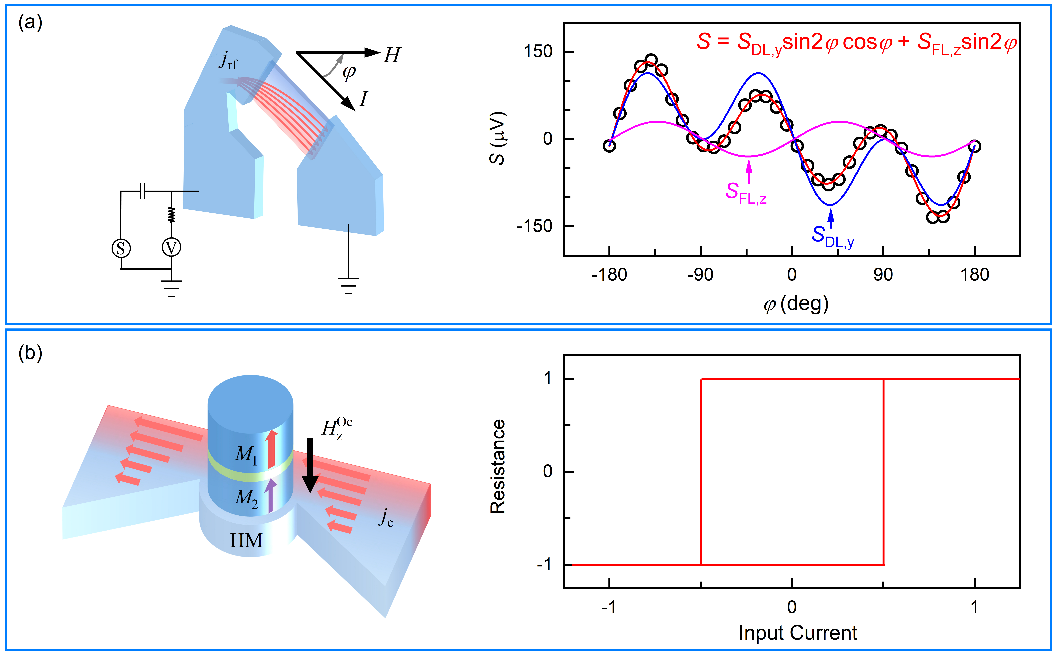Recently, Lijun Zhu group from Institute of Semiconductors, CAS reports that a perpendicular effective magnetic field can exist in magnetic micron devices due to asymmetric current spreading and varies with the geometries of devices and measurements. This effective perpendicular magnetic field can exhibit all the three characteristics that have been widely assumed in the literature to “signify” the presence of a flow of σz, i.e., external-magnetic-field-free current switching of uniform perpendicular magnetization, a sin2φ-dependent contribution in spin-torque ferromagnetic resonance signal of in-plane magnetization (φ is the angle of the external magnetic field with respect to the current, and a φ-independent but field-dependent contribution in the second harmonic Hall voltage of in-plane magnetization.
Technologically, such perpendicular effective magnetic fields induced by asymmetric current spreading within uniform magnetic heterostructures provide a new, universally accessible mechanism for efficient, scalable, and external-field-free switching of perpendicular magnetization for magnetic memory and computing.
Scientifically, this finding indicates that neglecting a significant current spread results in incorrect conclusions regarding the presence of perpendicular spins and strengths of different spin polarizations (including σx, σy, and σz). A unified solution is developed to reliably measure the spin-orbit torque efficiencies of different spin polarizations from angle-dependent measurements considering current spreading effects.
Source: Qianbiao Liu and Lijun Zhu, Current-induced perpendicular effective magnetic field in magnetic heterostructures, Appl. Phys. Rev. 9, 041401 (2022). https://doi.org/10.1063/5.0116765.

Fig. 1. Perpendicular effective fields induced by the micron spintronic devices. (a) sin2φ dependent response in the spin-torque ferromagnetic resonance of in-plane magnetization; (b) Current-induced switching of uniform perpendicular magnetization.
